© 2025 MJH Life Sciences™ , Patient Care Online – Primary Care News and Clinical Resources. All rights reserved.
Low Back Pain: Dissecting the Disability
Low back pain is a common disability, but how much do we really know about it? Test your LBP knowledge with our 11-question quiz.
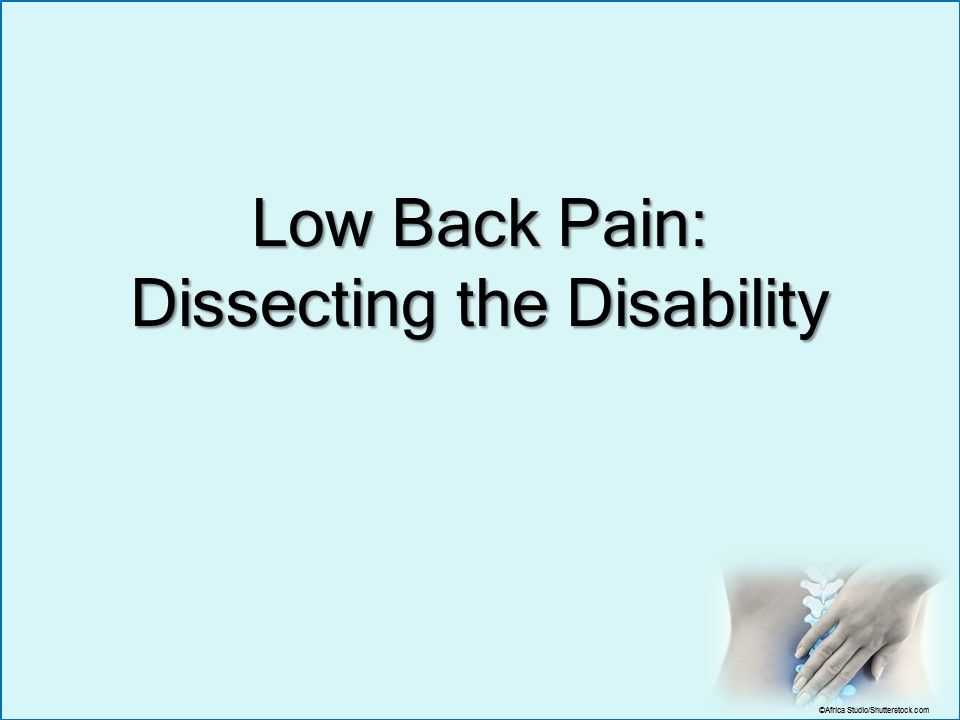
Click through our 11-question quiz to see how much you already know and learn some new facts about things you might not be as familiar with.

Answer: A. True. While LBP is the leading cause of disability worldwide, in some countries it is not the primary cause.
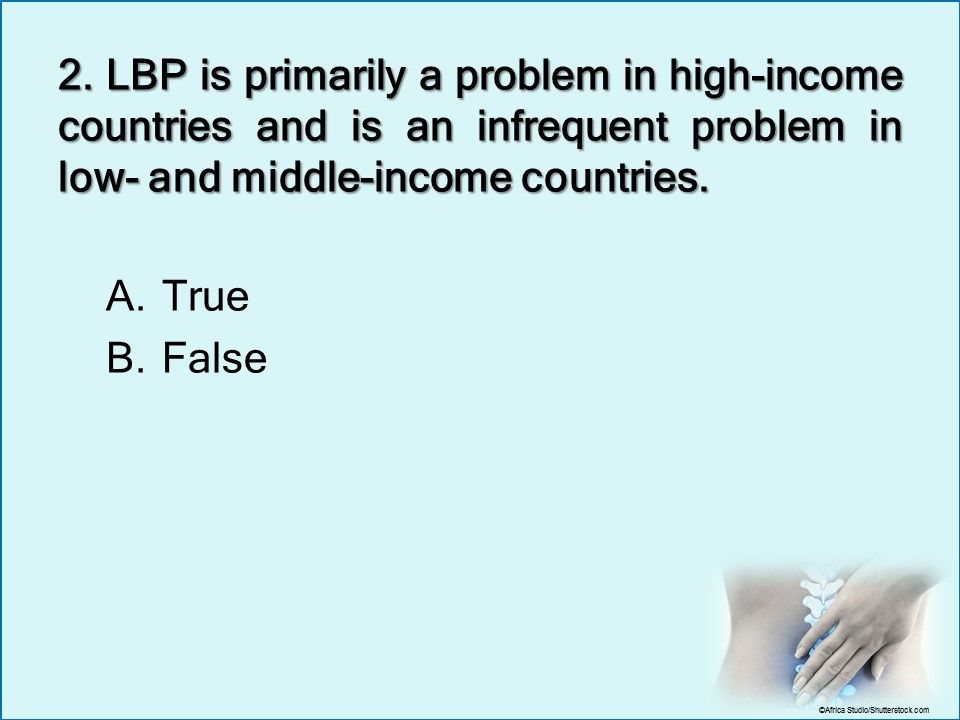
Question 2: True or false? LBP is more of a problem in high-income countries than in low- and middle-income countries.

Answer: B. False. While LBP appears to occur more frequently in high-income countries, it is also a significant public health problem in low- and middle-income countries. It is unclear whether these are true differences or if they reflect other factors such as access to healthcare or what is considered normal in these countries with regard to LBP.
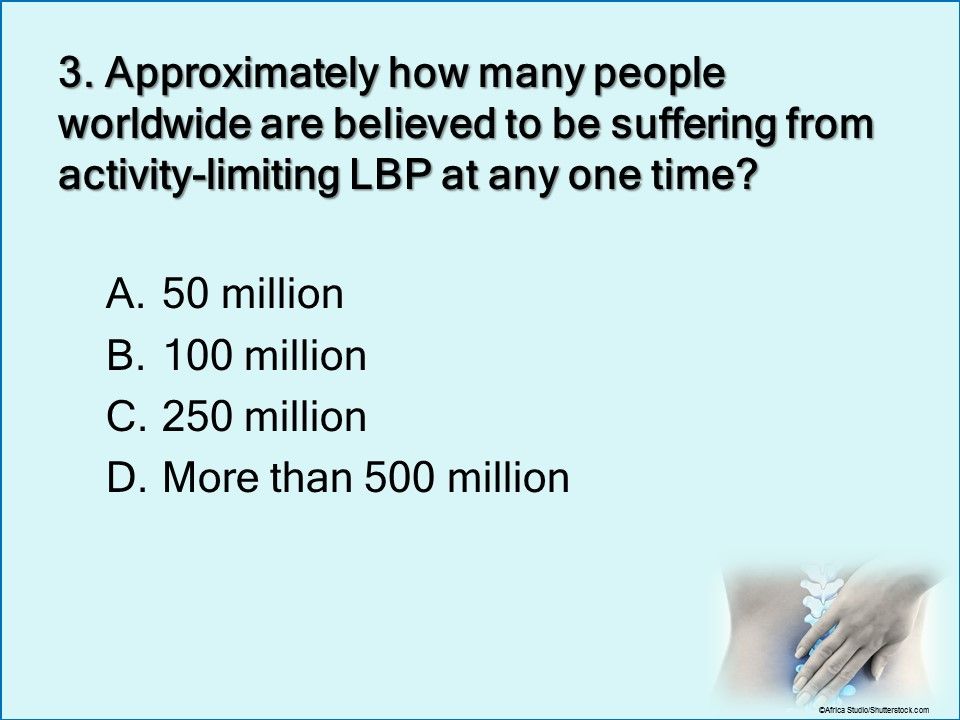
Question 3: Approximately how many people worldwide suffer from activity-limiting LBP at any one time?

Answer: D. Current research estimates that approximately 540 million people suffer from activity-limiting LBP at any one time.
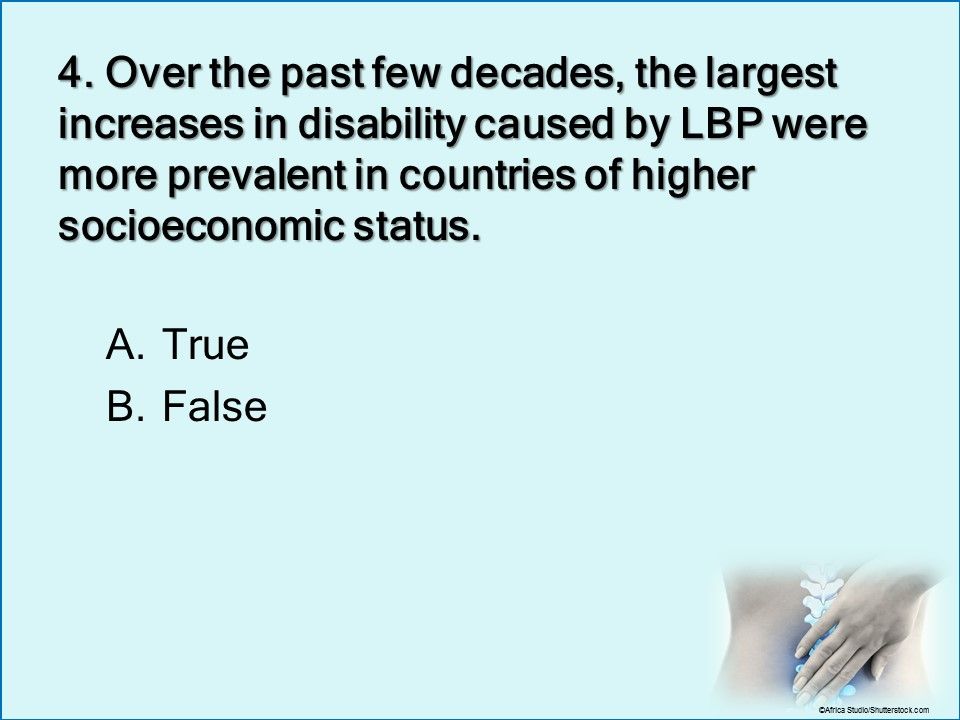
Question 4: True or false? Over the last few decades, the largest increases in disability caused by LBP were more prevalent in countries of higher socioeconomic status.

Answer: B. False. The largest increases in disability caused by LBP have occured in low- and middle-income countries, including Asia, Africa, and the Middle East.

Answer: B. False. It is important to note that no evidence exists that imaging improves patient outcomes and guidelines consistently recommend against the routine use of imaging for people with low back pain.
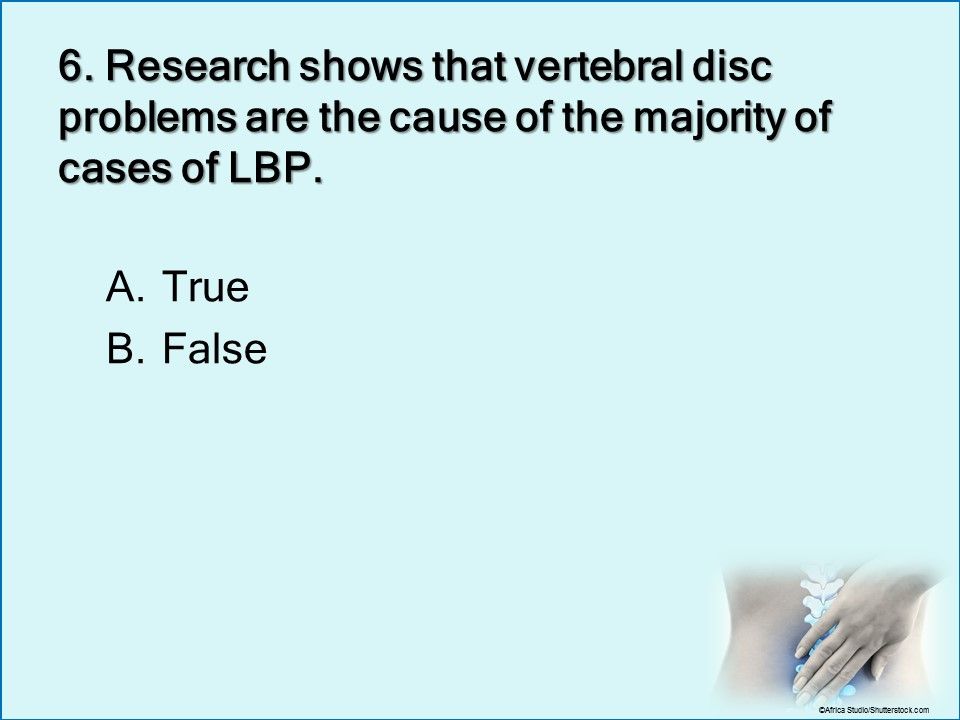
Question 6: True or false? Research shows that vertebral disc problems are the cause of the majority of LBP cases.

Answer: B. False. There is no current evidence showing that vertebral disc problems are the cause of LBP or even how frequently they cause LBP.
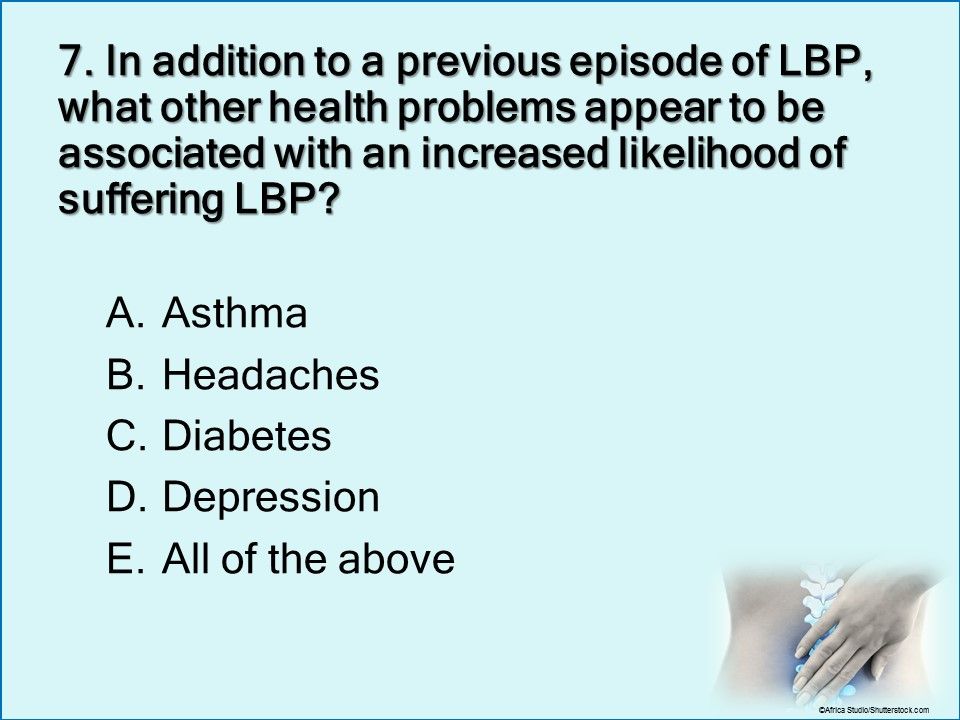
Question 7: In addition to a previous episode of LBP, what other health problems appear to be associated with an increased likelihood of LBP?

Answer: D. Research shows that asthma, headaches, diabetes, and depression all increase the likelihood of LBP.

Question 8: Which of the following is NOT a lifestyle factor associated with the development of LBP?
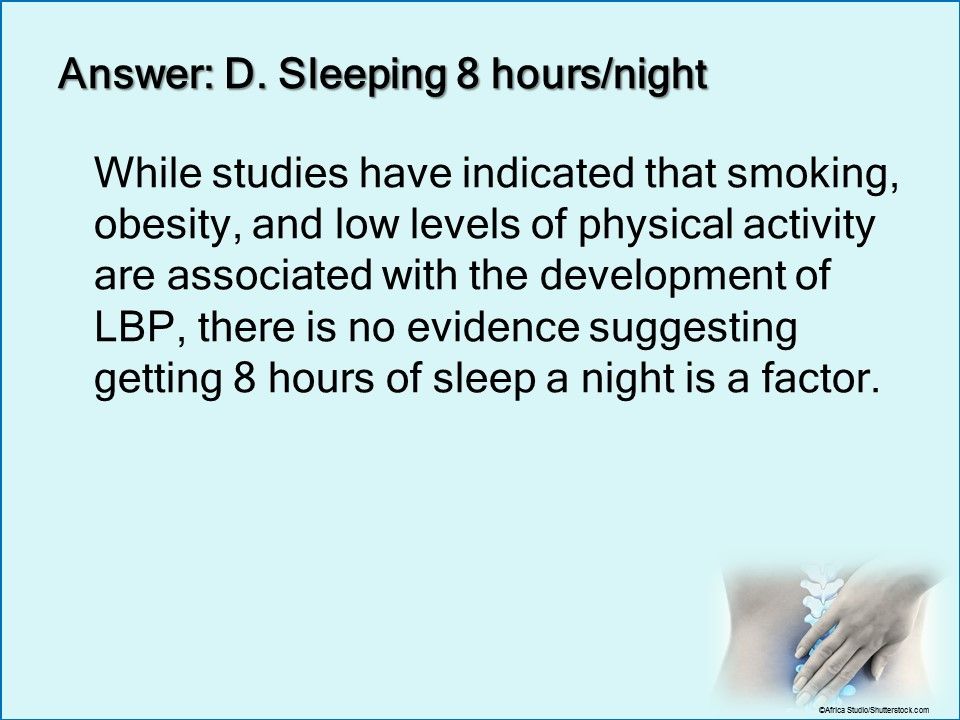
Answer: D. While beauty rest is important, it does not factor into whether a patient will develop LBP.
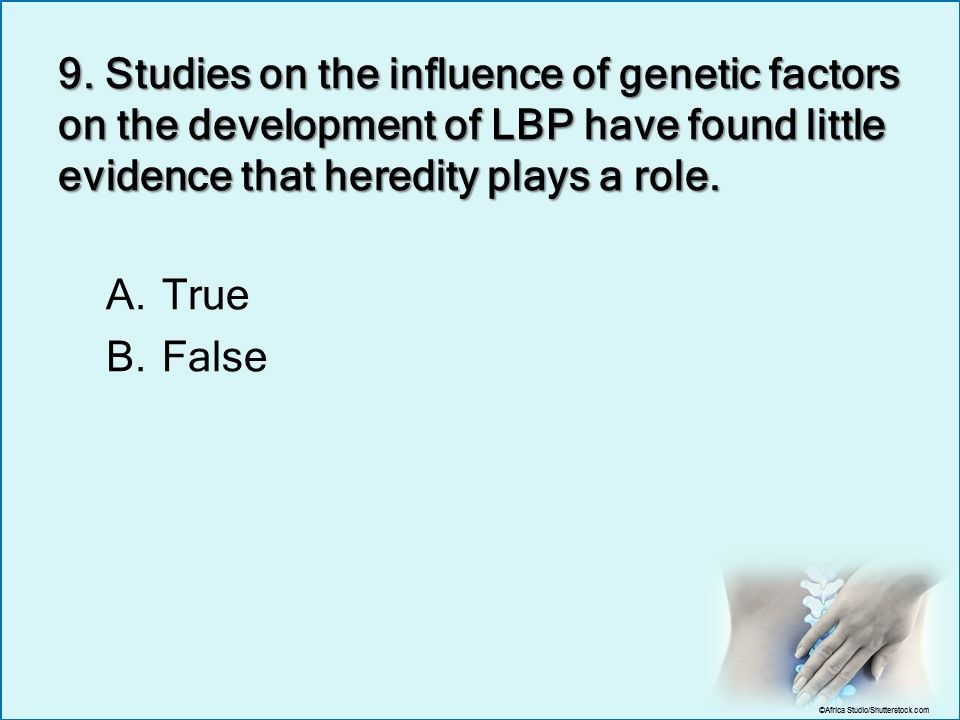
Question 9: True or false? Studies have found little evidence that heredity plays a role in the development of LBP.
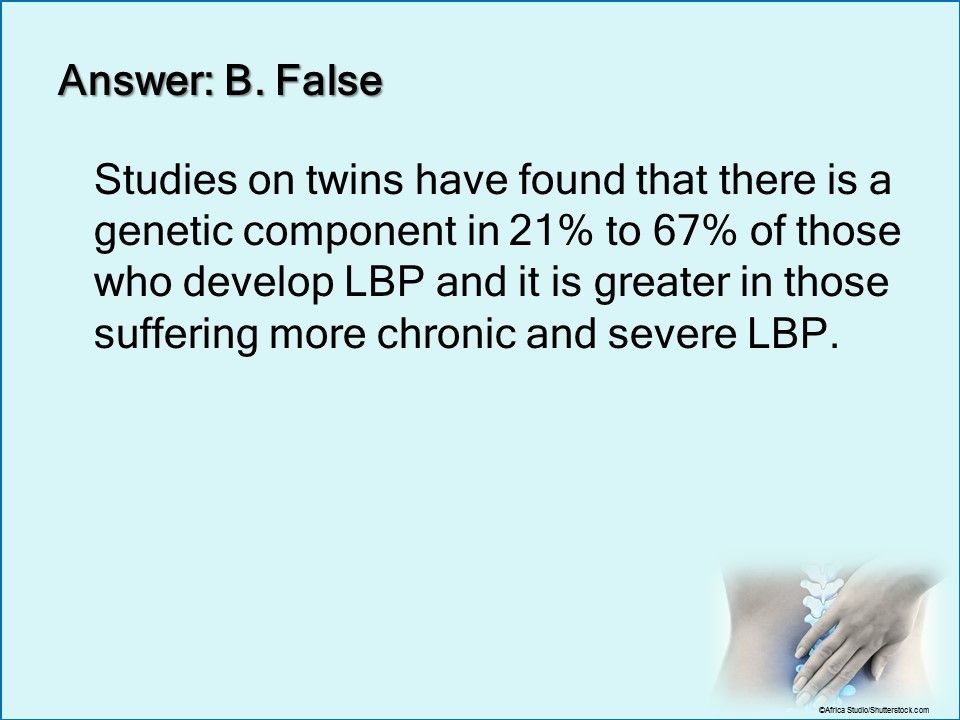
Answer: B. False. Studies on twins have found that there is a genetic component in 21% to 67% of those who develop LBP and it's greater in those suffering more chronic and severe LBP.
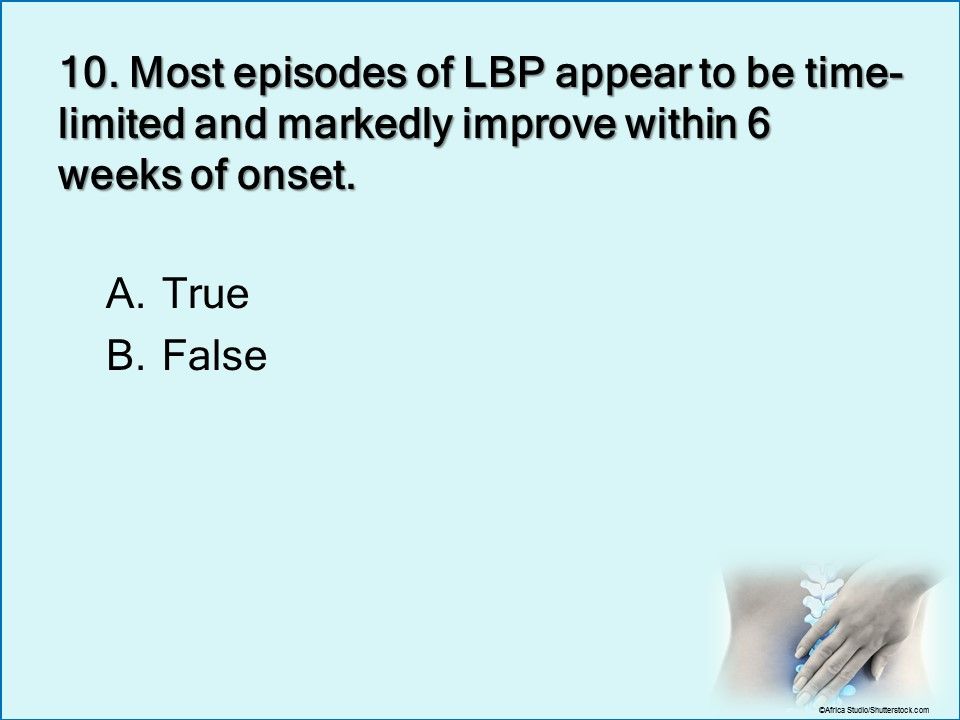
Question 10: True or false? Most episodes of LBP are time-limited and markedly improve within 6 weeks of onset.
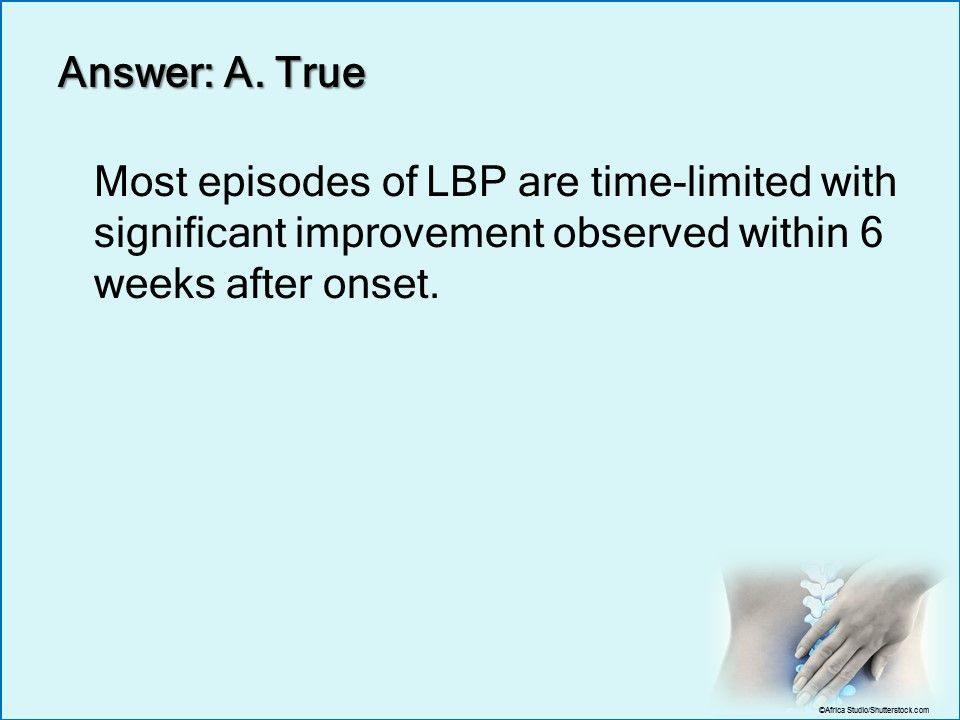
Answer: A. True. Most LBP episodes are time-limited with significant improvement seen within 6 weeks after onset.
Low back pain affects millions and cuts across age, socioeconomic status, and gender. While most patients with new episodes of low back pain recover rather quickly, recurrence is common and in some, pain can become persistent and disabling. and can even become persistant and disabling. This common and complicated condition was the subject of a 2-part series published in the The Lancet.Â
Related Content:







